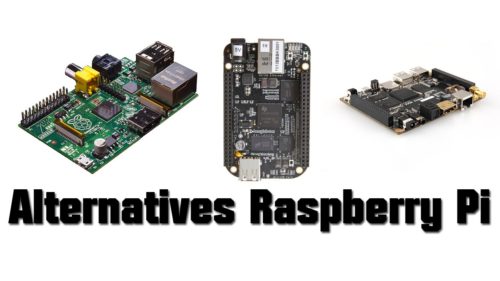
Since its release a few years, the Raspberry Pi has become the computer that has taken the world by storm. Largely helped by the device’s incredibly compact form factor and very cheap market price. However, the Raspberry Pi isn’t the only micro-computer available anymore, so what are the alternatives and how do they compare to the Raspberry Pi?
VoCore
If you’re looking for a device that’s even cheaper and even smaller than the Raspberry Pi, you’ll find exactly what you’re looking for in the VoCore. It’s a coin-sized Linux computer that’s completely open source and only costs $20! With that in mind, you’re not going to be getting the same level of power as the Raspberry Pi, but that might not necessarily be a problem for those who don’t need access to a high powered micro-computer.
That being said, the VoCore does have one key advantage over its competitors and that’s on board WiFi. The common case with the Raspberry Pi and other microcomputers is that in order to connect to them wirelessly, you need to plug in a cumbersome dongle. However, the VoCore manages to fit a WiFi chip on board its tiny form factor, which is a pretty impressive feat for a device that’s both smaller and cheaper than the Raspberry Pi.
NanoPC-T3
If you’re looking to pack a little more power out of a microcomputer for your next project, the NanoPC-T3 is undeniably a comprehensive option. It offers an incredibly powerful octa-core processor, which is pretty much unheard of when it comes to microcomputers and completely dwarfs for the two cores on board the Raspberry Pi.
That being said, you can expect to pay a little extra for the NanoPC-T3, however, for those that need access to its power, it’s a worthwhile investment. More specifically, the processor you’ll find on board this little chap is a Samsung S5P6818 octa-core ARM Cortex-A53 up to 1.4GHz, with both 1GB and 2GB variants available. Plus, there’s always the ability to expand the PC’s functionality, with USB ports and gigabit Ethernet.
Why not build your own?
Of course, if the alternatives don’t provide what you’re looking for in a microcomputer, it’s now pretty easy to build your own microcomputer. This allows you to choose the specs you need for your project and not waste any materials in the process.
However, designing a printed circuit board is no easy task. That’s where Altium’s electronic circuit design software comes in. It’s often claimed to be the easiest and most efficient PCB design software on the market, helped by the fact that it’s designed for beginners with no prior technical knowledge of designing such boards.
In conclusion, the Raspberry Pi is no longer the only option when it comes to picking a microcomputer. Whilst the Pi was a fantastic pioneer for the industry, there’s now so many other options available, it’d be daft not to consider them. Plus, the ability to even design your own PCB for use with a microcomputer offers complete flexibility.
 Gearfuse Technology, Science, Culture & More
Gearfuse Technology, Science, Culture & More
